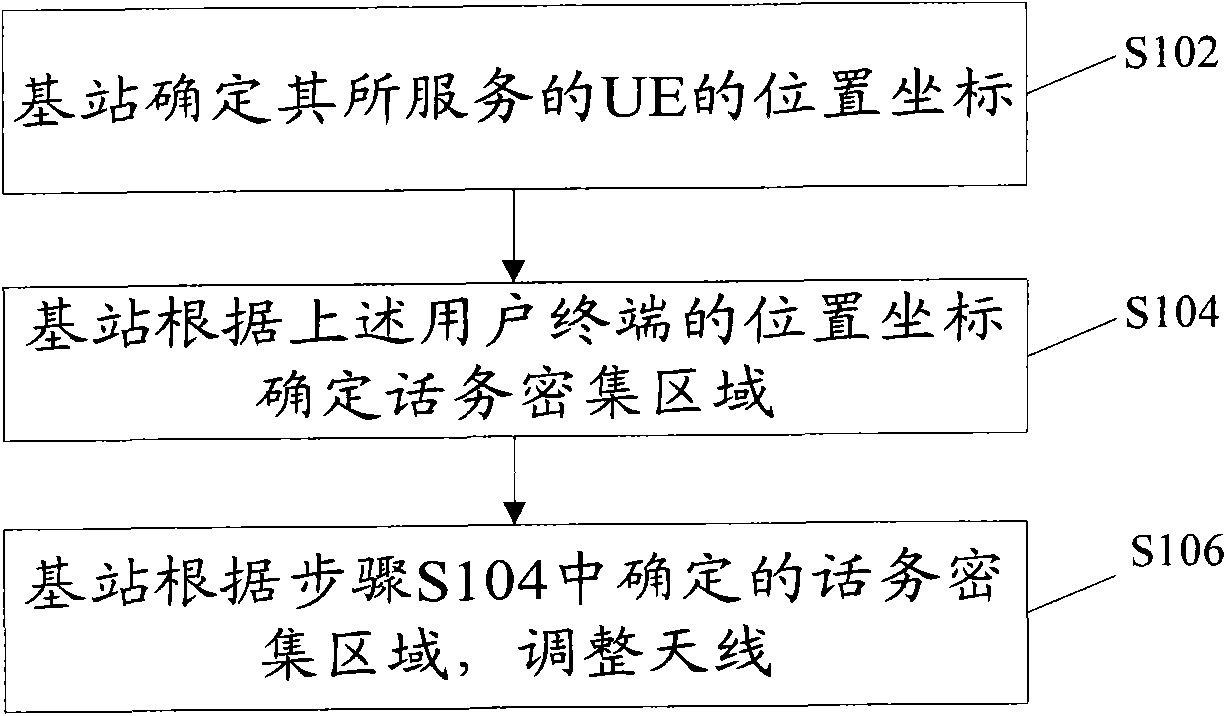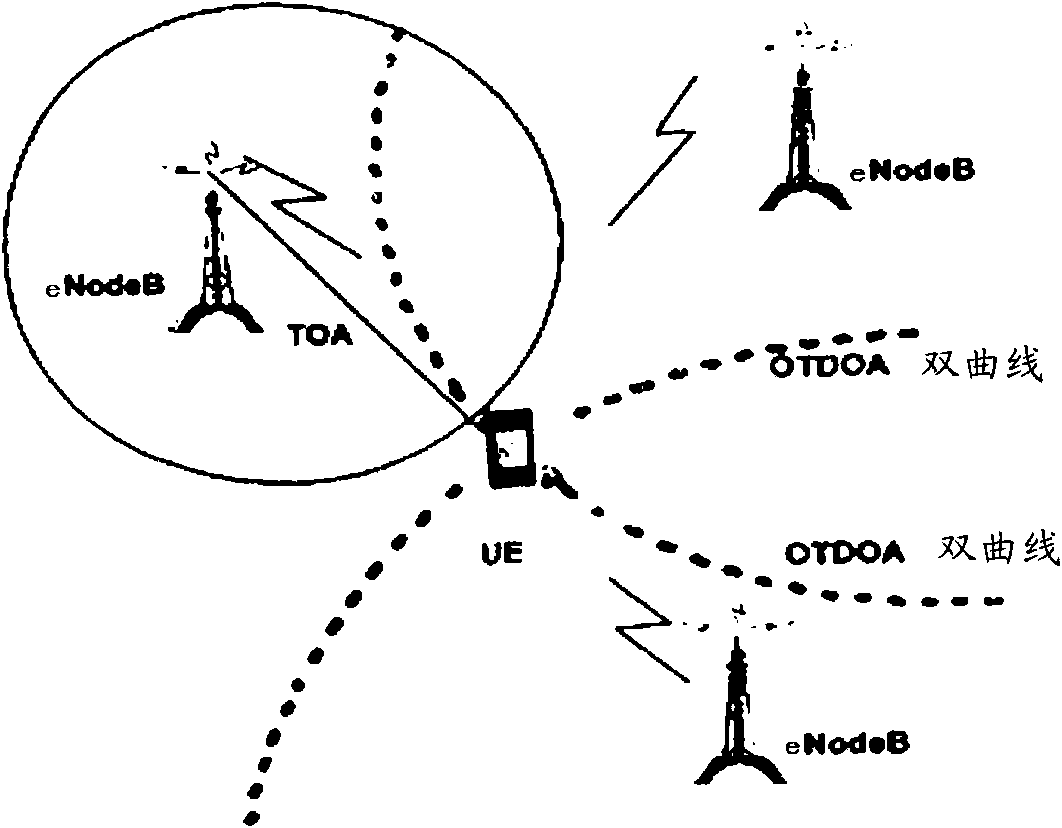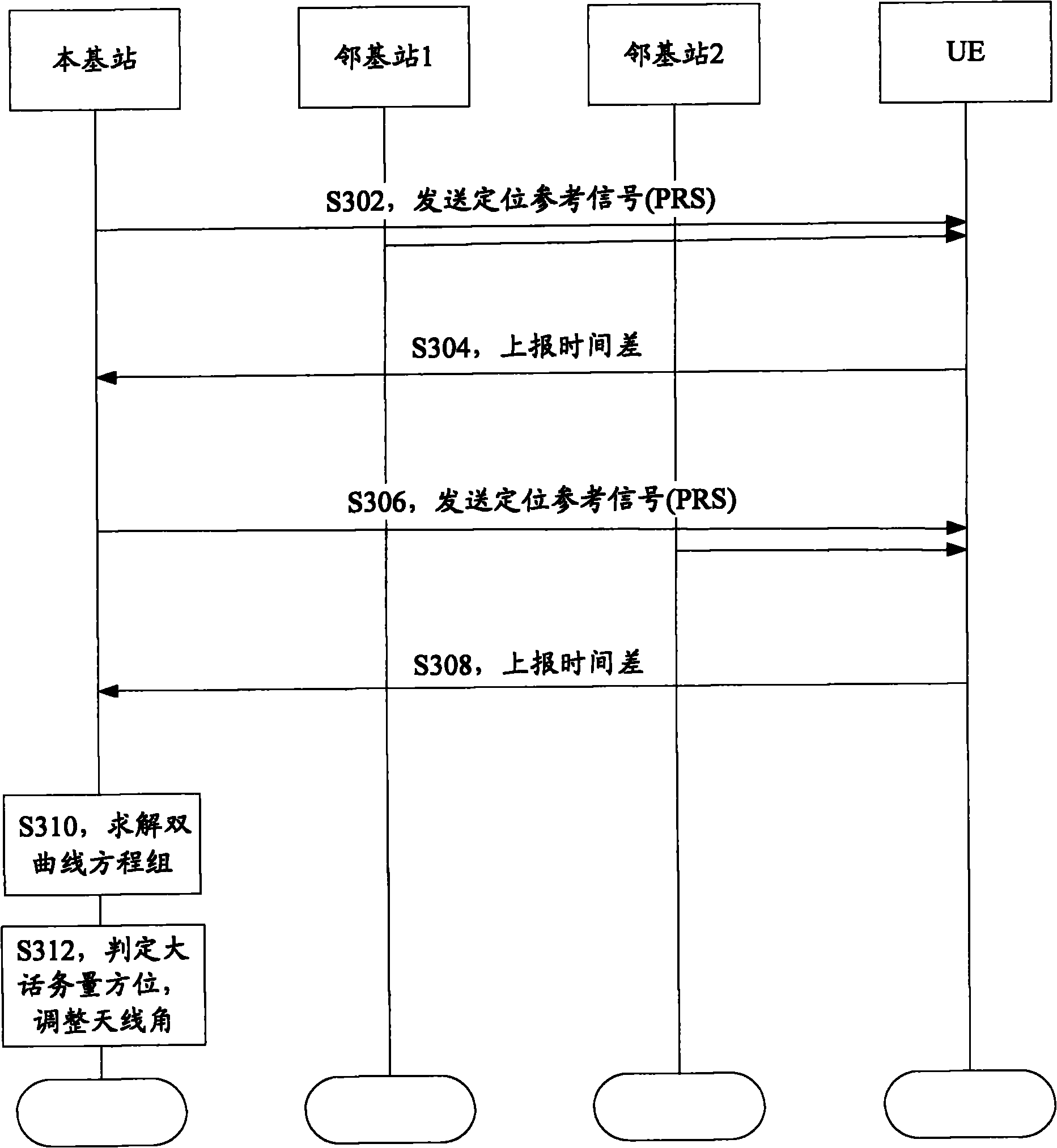Antenna adjustment method and base station
An adjustment method and base station technology, applied in the directions of antennas, antenna components, wireless communications, etc., can solve the problems of user terminal call drop, network congestion, service quality degradation, etc., and achieve the effect of avoiding congestion and call drop.
- Summary
- Abstract
- Description
- Claims
- Application Information
AI Technical Summary
Problems solved by technology
Method used
Image
Examples
Embodiment 1
[0030] Such as image 3 As shown, taking a case where a user calls and complains about a call drop or congestion in a certain location due to heavy traffic (manual triggering) as an example, the base station uses OTDOA technology to locate and obtain the user's location coordinates (that is, the UE used by the user) in detail. ) The specific steps are as follows:
[0031] From step S302 to step S304, the initial condition is that the base station has location information of two neighboring base stations (neighboring base station 1 and neighboring base station 2). The base station and the adjacent base station 1 synchronously send positioning reference signals to the UE, and the UE obtains TDOA (Time Difference Of Arrival, time difference of arrival) and reports it to the base station; the base station calculates the distance from the UE to the base station and the adjacent base station 1 based on TDOA. The distance difference, and according to the distance difference to list ...
Embodiment 2
[0039] Embodiment 2 When congestion or call drop occurs in multiple UEs (automatic trigger)
[0040] Step 1, obtain the position coordinates of multiple UEs, and the process of obtaining the position coordinates of each UE is the same as image 3 Step S302 to step S310 in. This step corresponds to figure 1 Step S102 in.
[0041] Step 2, calculate the angle of the position of each UE (coordinates can also be converted into radians);
[0042] Specifically, firstly, a coordinate system is established with the base station as the origin and a predetermined direction (such as the due east direction) as the x-axis, and the position coordinates of multiple UEs calculated in the above step 1 are converted into new positions in the coordinate system coordinates; then, according to the new position coordinates of each UE, calculate the included angle between the connection line between each UE and the base station and the above-mentioned x-axis, and obtain the position angle of each ...
Embodiment 3
[0048] Embodiment 3 Periodically adjust the antenna azimuth angle according to the traffic distribution (periodic triggering)
[0049] Step 1. Adjustment can be made in advance when transfer occurs in a large traffic area, instead of waiting until congestion or call drop occurs, so as to prevent problems before they happen. Obtain the position coordinates of all active UEs, and the process of obtaining the position coordinates of each UE is the same as image 3 Step S302 to step S310 in. This step corresponds to figure 1 Step S102 in.
[0050] Step 2, calculate the angle of the position of each UE (coordinates can also be converted into radians);
[0051] Step 3: Divide the cell corresponding to the base station into several equal parts, and judge whether there is an area with dense traffic. If 30° is used as an area (also called a sub-sector), the cell covered by the omnidirectional antenna can be divided into 12 equal parts. The area division of omnidirectional antenna ...
PUM
 Login to View More
Login to View More Abstract
Description
Claims
Application Information
 Login to View More
Login to View More - R&D
- Intellectual Property
- Life Sciences
- Materials
- Tech Scout
- Unparalleled Data Quality
- Higher Quality Content
- 60% Fewer Hallucinations
Browse by: Latest US Patents, China's latest patents, Technical Efficacy Thesaurus, Application Domain, Technology Topic, Popular Technical Reports.
© 2025 PatSnap. All rights reserved.Legal|Privacy policy|Modern Slavery Act Transparency Statement|Sitemap|About US| Contact US: help@patsnap.com



